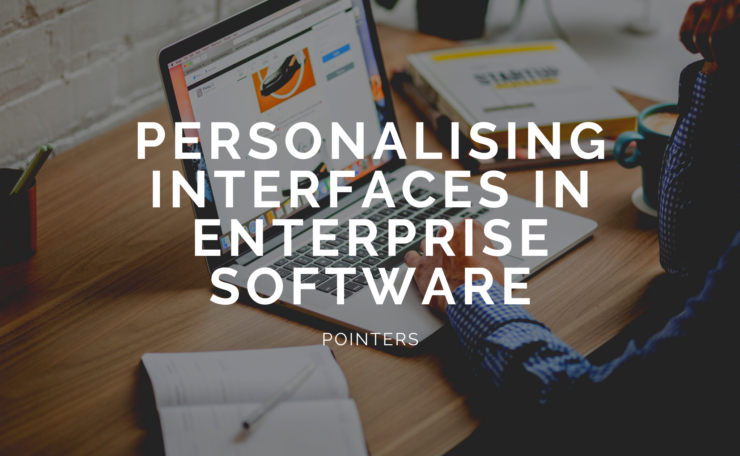Google released its AI Gemini on 07 Dec 2023.
One of its amazing features is generating custom user interfaces.
Gemini’s capability to reason about user intent for generating bespoke experiences can be highly advantageous for enterprise SaaS (Software as a Service) companies. This feature aligns perfectly with the needs of such companies to deliver personalized, efficient, and user-friendly experiences to their clients.
Here are a few ways Enterprise products could benefit from adopting tailored UI.
1. Customizable Dashboards in Project Management Tools
In today’s fast-paced project environments, having a dashboard that adapts to individual roles and responsibilities is crucial. These tools can automatically surface the most relevant tasks, deadlines, and updates for each user, enhancing efficiency and focus.
For example:
- Asana: Automatically highlight upcoming deadlines, task dependencies, or team overviews based on the user’s role, like project manager or team member.
- Trello: Display relevant boards and cards; for a developer, focus on current sprints and bug tracking, while a marketer sees campaign tracking boards.
2. Adaptive CRM Interfaces
CRM platforms are at their best when they can present users with the information that’s most relevant to their specific job functions. By tailoring interfaces for sales, marketing, or customer support roles, these systems can streamline workflows and improve user engagement.
For example:
- Salesforce: For sales reps, emphasize lead tracking and sales opportunities; for customer service agents, prioritize support tickets and customer interaction histories.
- HubSpot: Tailor the dashboard to display marketing campaign analytics for marketers and sales pipelines for sales professionals.
3. Dynamic Content Management Systems (CMS)
A CMS with an adaptive interface can dramatically improve productivity by presenting tools and options relevant to specific user roles. Whether it’s streamlined content creation for writers or advanced site management for developers, a personalized interface makes all the difference.
For example:
- WordPress: Offer a simplified content creation interface for writers, while web administrators get quick access to plugins, themes, and site settings.
- Drupal: Customize the admin panel to show content publishing tools for editors and advanced site configuration options for site managers.
4. Personalized Analytics Dashboards
Data analytics platforms can become more powerful when they provide personalized insights. By customizing dashboards to highlight the most relevant data for different roles, these tools can transform raw data into actionable insights tailored to each user’s needs.
For example:
- Tableau: For finance professionals, prioritize financial KPIs and budget reports; for marketing analysts, focus on consumer behavior and campaign performance.
- Google Analytics: Highlight e-commerce performance metrics for e-commerce managers and user engagement statistics for content managers.
5. ERP Systems Tailored to Department Needs
ERP systems are integral to various departmental functions within an organization. Customizing these interfaces to highlight the most relevant tools and information for each department can significantly enhance operational efficiency and decision-making.
For example:
- SAP: In the finance department, emphasize financial reporting and asset management, while HR sees employee data and payroll management features.
- Oracle ERP Cloud: Provide inventory and order management insights for supply chain managers, and project costing tools for project managers.
6. Tailored Learning Management Systems (LMS)
An LMS like Moodle or Blackboard can adapt its interface to show relevant courses, materials, and assessments based on the user’s learning history and preferences. For instance, a user focusing on technical skills might see more programming and IT-related courses on their dashboard.
For example:
- Moodle: For students, display relevant courses and assignments upfront; for instructors, provide easy access to course management and grading tools.
- Blackboard: Adapt the interface to highlight upcoming deadlines and resources for students, and analytics on student performance for educators.
7. Adaptive Interfaces in Communication Tools
Communication platforms like Slack or Microsoft Teams can tailor their interface to highlight the most used channels, direct messages, or features based on the user’s interaction patterns, thereby improving navigation and user efficiency.
For example:
- Slack: Prioritize frequently used channels and direct messages for regular users, and administrative settings and analytics for team administrators.
- Microsoft Teams: Customize to show relevant team channels for team members, and management tools for team leads.
8. Customized Interface in Cloud Storage Services
In cloud storage platforms like Dropbox or Google Drive, the interface could prioritize and organize files and folders based on the user’s usage patterns and frequently accessed documents.
For example:
- Dropbox: Display frequently accessed files and collaboration tools for regular users, and administrative controls for account administrators.
- Google Drive: Highlight team-shared documents for collaborative users, and offer extensive file organization tools for managers.
9. Healthcare Management Software Customization
In healthcare management platforms, the interface for a physician might prioritize patient appointment schedules and medical records, while an administrative staff member sees billing and insurance information.
For example:
- Epic Systems: Show patient schedules and medical records for physicians, and billing and insurance information for administrative staff.
- Cerner: Customize to display patient care plans and diagnostics for clinicians, and resource management tools for hospital administrators.
10. User-Specific Features in HR Software
HR platforms like Workday or BambooHR could customize their interface to display relevant features for different roles. An HR manager might have tools for performance reviews and recruitment processes, while an employee sees their personal HR documents and leave requests.
For example:
- Workday: For HR professionals, prioritize recruiting and performance management tools; for employees, highlight personal benefits information and leave requests.
- BambooHR: Tailor the interface to display payroll and compliance tools for HR managers, and self-service options for personal HR tasks for employees.
In all, the future for custom user interfaces looks bright.
Super excited to see this to fruition.

